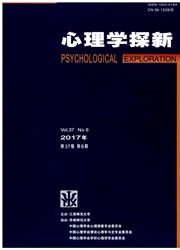

 中文摘要:
中文摘要:
Generalized DINA Model(G-DINA)为认知诊断模型提供了一个一般性的理论框架,而高阶诊断模型不仅能描述被试的总体水平,还能描述被试对属性的掌握情况(微观的认知状态)以及被试掌握属性与能力的关系,提供更丰富的信息。如果能把这两者结合起来,可能对实际诊断工作的操作有较大帮助。文章首先对考虑高阶结构的整合性模型——HO-GDINA模型的形式进行讨论,探讨其参数估计EM算法的实现,并用模拟过程对模型的估计精度进行研究,结果验证了HO-GDINA的EM算法的正确性,并且说明该算法对该模型有较高估计精确度。然后用饱和模型在约束条件下的特殊形式HO-DINA模型对"分数减法"这一经典数据进行EM算法参数估计和具体分析,展示了HO-GDINA在实际情况中的具体使用,并与de la Torre之前用MCMC估计算法得到的研究结果做比较,基本一致,进一步表明HO-GDINA模型的参数估计EM算法在实际情境中的特殊形式下仍然适用。
 英文摘要:
英文摘要:
Generalized DINA Model( G-DINA) is a cognitive diagnostic model providing a general theoretical framework. Higher-order latent traits can provide not only the overall level of participants,but also the cognitive situation and the relationship between general aptitude and specific knowledge,which provides more abundant information. If we combine the two,it may be helpful for the actual diagnosis. First,the HO-GDINA model are discussed with the form of model and the EM algorithm for estimating parameters. In the simulation study,the results validate the correctness of HO-GDINA with EM algorithm. Then,we use the saturated model under the constraint condition HO-DINA model to analyze the classical data"subtract of fraction"with EM algorithm. Comprising with de la Torre's research of MCMC estimation algorithm,the results are almost the same,signing that the parameter estimation with EM algorithm of the special HO-GDINA model under the actual situation still apply.
 同期刊论文项目
同期刊论文项目
 同项目期刊论文
同项目期刊论文
 期刊信息
期刊信息
